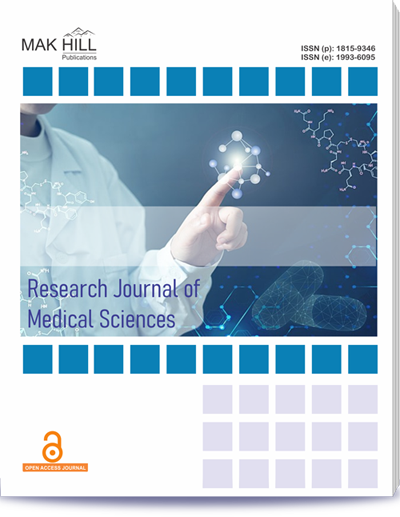
Research Journal of Medical Sciences
ISSN: Online 1993-6095ISSN: Print 1815-9346
151
Views
16
Downloads
Assessment of Cord Bilirubin, Total Serum Bilirubin and Transcutaneous Bilirubin for Predicting and Managing Neonatal Jaundice
Parikshit Pundalik Deore, Abhinay Bhaskar Darwade and Sunil Dhansing Pagare
Page: 104-110 | Received 28 Sep 2023, Published online: 19 Oct 2023
Full Text Reference XML File PDF File
Abstract
Neonatal jaundice, characterized by yellowing of the skin and mucous membranes due to elevated bilirubin levels, is a common clinical sign in newborns. Effective management of jaundice is essential to reduce morbidity and mortality rates. However, the rising costs of healthcare and the trend toward shorter post-delivery hospital stays necessitate early identification and risk assessment of neonatal jaundice. Unidentified hyperbilirubinemia can lead to severe complications, such as Bilirubin Induced Neurological Dysfunction (BIND). In this context, our study aimed to explore the predictive potential of cord bilirubin (CB), transcutaneous bilirubin (TcB) and total serum bilirubin (TSB) in neonatal jaundice management, focusing on a rural hospital's need for efficient early discharge strategies while minimizing complications. Implement a third-day discharge policy for neonates at minimal risk, coupled with regular check-ups. Enforce early follow-up within 48 hrs for neonates at moderate risk. Initiate prompt interventions for high-risk neonates. Identify potential causative factors contributing to neonatal hyperbilirubinemia. A prospective cohort of 650 consecutive live newborns was studied. Neonates were evaluated for jaundice at birth (cord bilirubin), between 24-72 hrs (transcutaneous bilirubin, TcB, using Kramer’s rule and after 72 hrs (total serum bilirubin, TSB and TcB). Exclusion criteria included extreme prematurity, low birth weight, multiple gestation, life-threatening congenital anomalies, severe birth asphyxia, conjugated hyperbilirubinemia, jaundice onset after two weeks and Rh incompatibility. The study revealed a positive correlation between cord bilirubin and TSB at 72 hrs, as well as between cord bilirubin and TcB at 72 hrs. Cord bilirubin levels exceeding 2.5 mg dL‾1 exhibited a high sensitivity (78.18%) and negative predictive value (86.66%) for predicting significant hyperbilirubinemia. Analysis by weight groups showed that cord bilirubin, TSB and TcB were effective determinants in predicting hyperbilirubinemia. TcB measurements demonstrated a significant correlation with TSB levels, strengthening their use in identifying neonates at risk. This study presents critical insights into neonatal jaundice management in a rural hospital setting. The predictive power of cord bilirubin, TSB and TcB can improve risk-based discharge and follow-up strategies, reducing complications associated with hyperbilirubinemia.
How to cite this article:
Parikshit Pundalik Deore, Abhinay Bhaskar Darwade and Sunil Dhansing Pagare. Assessment of Cord Bilirubin, Total Serum Bilirubin and Transcutaneous Bilirubin for Predicting and Managing Neonatal Jaundice.
DOI: https://doi.org/10.36478/10.59218/makrjms.2023.12.104.110
URL: https://www.makhillpublications.co/view-article/1815-9346/10.59218/makrjms.2023.12.104.110